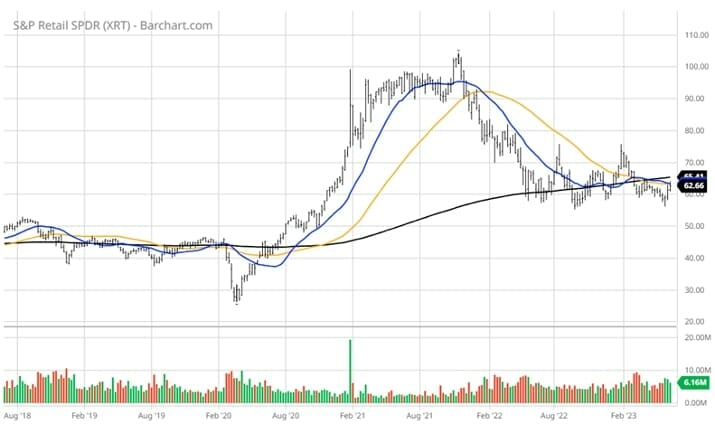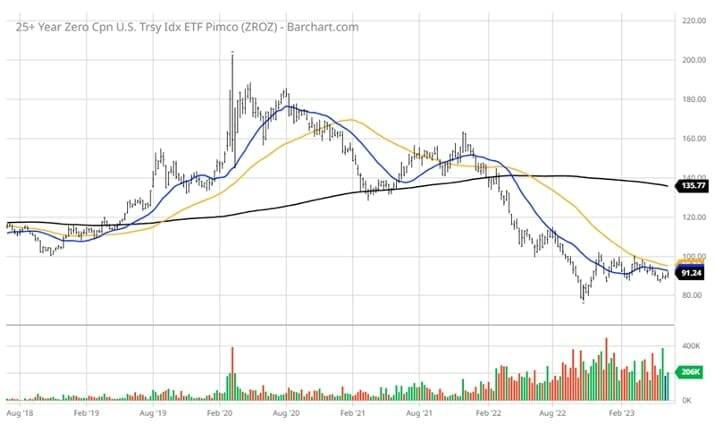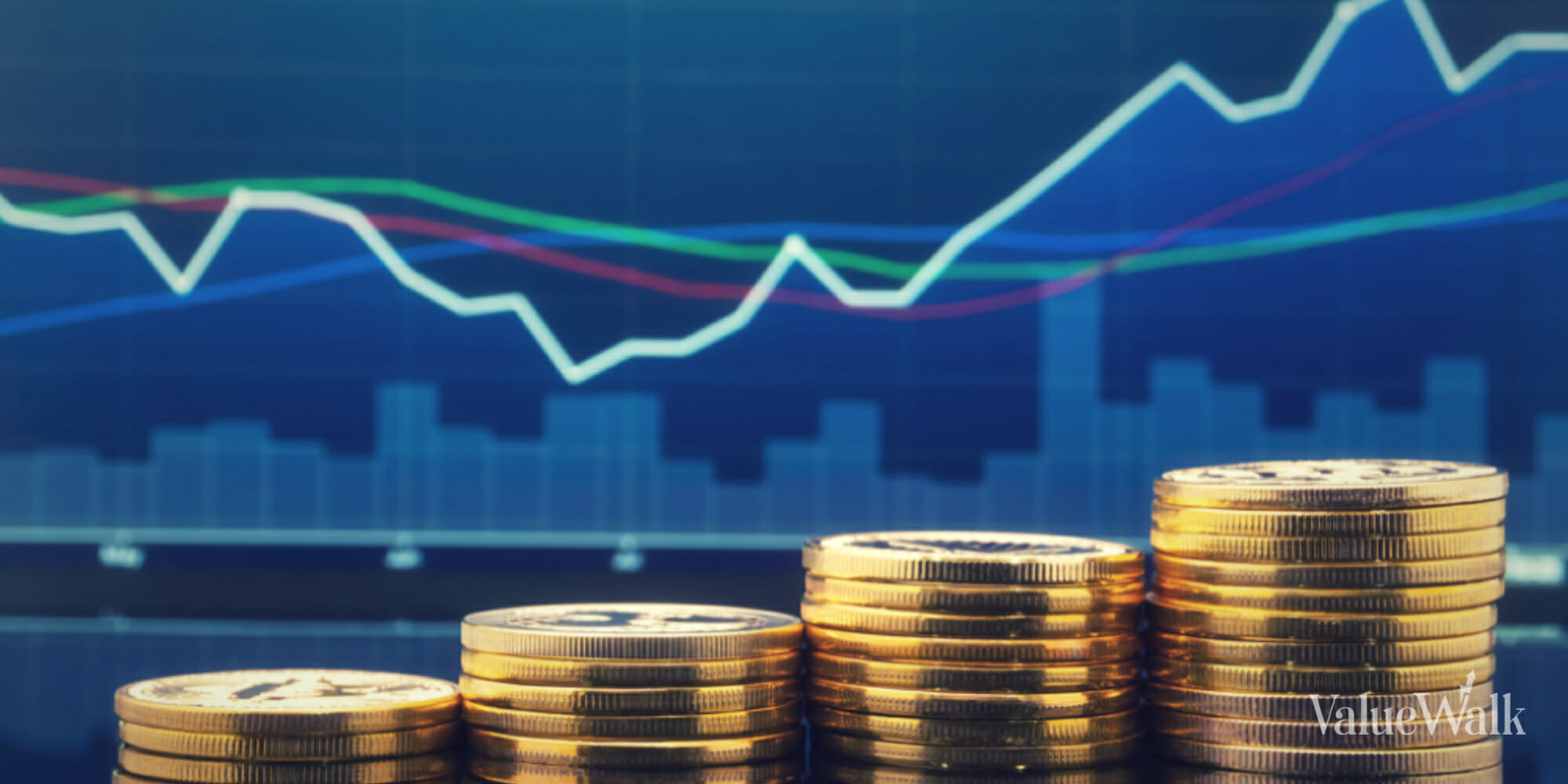For weekend reading, Bryan Perry, Senior Director with Navellier Private Client Group, offers the following commentary:
A few indicators are taking shape within financial markets that indicate it may be time to profit from the bond market as well as the stock market. Let’s start with Fed Chair Jerome Powell noting several inflation indicators moving in the right direction, which, in my view, was a green light for stocks to advance.
The Fed’s stated target for inflation of 2% almost sounds like a pipe dream, given the cost of housing and the strong labor market, but the Fed governors see the cost of interest on the $32 trillion in U.S. federal debt as a looming judgment day for the dollar if they can’t reign in the cost to carry that debt load until Congress gets religion on fiscal policy.
This will only happen, in my view, when fiscally minded leaders on both sides of the aisle agree that doing nothing could cause a historical reset of Biblical proportions.
Interest payments on the federal debt now form a “hockey stick chart” (below), leaping from half a trillion to nearly $1 trillion per year since 2020. This must keep the 400 or so PhDs at the Federal Reserve up at night. I think Powell’s commitment to get inflation back to 2% is rooted in a quote from Albert Einstein: “Compound interest is the 8th wonder of the world. He who understands it earns it; he who doesn’t pays it.”

If the Fed intends to deconstruct the embedded inflationary forces of the past 18 months, it will have to orchestrate the unemployment rate rising to around 4.5%, which implies the loss of about 1.8 million jobs. This would indeed amplify the notion that the current pause in Fed monetary policy is temporary.
While I agree that inflation is moving in the right direction, the bump in retail sales and consumer confidence data sends a clear message – that despite $17+ trillion in household debt, the reactivation of student loan payments, and credit card rates pushing above 20%, the cheapest average ticket price to see Taylor Swift is $969 in sold-out venues. The highest prices average $20,503 (source: Stubbhub.com).
There seems to be a real disconnect between luxury items and what the average U.S. consumer is facing. Case in point: Home Depot CEO Ted Decker stated in a recent CNBC interview that this #1 home retailer expected to see sales decline by 2% to 5% compared to 2022, and earnings to fall by 7%-13%.
Now, to put that news in some context, Home Depot enjoyed an explosion of 47% sales and 60% earnings growth during the pandemic period, so a single-digit pullback makes sense, but not when it’s on borrowed money.
Former Home Depot CEO Bob Nardelli issued a grim warning over the U.S.’s “very complex” economy, cautioning consumers that middle market companies are under “tremendous pressure,” saying, “I think we’re going to see a lot of bankruptcies, like Bed, Bath and Beyond.” (Fox Business News).
This is an insightful observation. While the market has rallied on the back of optimism surrounding AI, stocks of specialty retailers have tanked from bearish forward guidance, running counter to market euphoria.
I think the commentary from Costco and Home Depot about consumers shying away from big-ticket purchases is somewhat telling about what lies ahead. The chart (below) of the S&P Retail SPDR ETF (XRT) shows a big covid-related spike in spending due to trillions in stimulus checks falling out of the sky, followed by what looks to be a hunkering down of sorts. It argues well that following this summer’s expected spending and travel spree, we’re likely to see the ushering in of a period of belt-tightening.

Of course, I could be dead wrong and consumer balance sheets may experience some sort of fiscal epiphany – from where, I’m not sure – but I would venture to say that Bob Nardelli is probably on point, and that recent stresses in regional banks and the Fed seeking to break the economy to hammer inflation down to 2% to ameliorate the national debt crisis bodes well for a deflationary cycle and lower interest rates going forward.
The Fed failed to recognize inflation in all its fullness early on, and they are now committed to getting it right or they imperil the ability of the country to make good its debt obligations.
Ray Dalio, founder of Bridgewater Capital, the largest hedge fund in the world, stated in Fortune on June 8 that the U.S. is facing a big-cycle debt crisis and that Treasuries are risky. It’s my view that Ray Dalio has an open line to Jay Powell, and they are reading off the same sheet of music.
Progressive spending habits are jeopardizing the future of the U.S., and unless both interest rates and government spending come way down, America will go the way of the Roman Empire. It took a long time to wind down, but it ultimately failed monetarily, culturally, and morally. So many people seem jaded by high debt exposure, personally, in business, and at the national level. There seems to be so little emphasis on the future.
And now for the good news. Assuming common sense prevails at some point – and I think it will, at a time when people recognize all that free stuff is no longer coming, because the government is facing a head-on collision with reality – the Fed will orchestrate an economic slowdown that brings rates lower. In doing so, I see an investment proposition that is simply compelling.
About this time a year ago, the 30-year Treasury was yielding around 3.0%. Today, it yields 3.85%. The iShares 20+ Year Bond ETF (TLT) was trading around $118 then, and today it trades at $102.60 as of last Friday. If the long bond gets back down to 3.00%, then shares of TLT should return 15% from current levels. That’s assuming the Fed gets its way with fighting inflation and, with the $31+ trillion debt elephant in the room, I think they will slow the economy to whatever level it takes to break inflation.
For those with an appetite for more risk, the PIMCO 25+ Year Zero Coupon U.S. Treasury ETF (ZROZ) was trading at $110 back in early June 2022, when long bond yields were 3.0% and today it trades at $91.25. A move back from 3.85% to 3.00% would theoretically return 21% in shares of ZROZ. Not bad, considering potentially high-performance alternatives to lofty year-to-date stock market returns.

If the Fed does in fact achieve its 2% target rate of inflation and long-term rates drop below 3%, then the returns on long-term zeros get into OMG territory, where 50% gains are a plausible scenario.
At this juncture, this is just a “watch list” situation, but when and if the data falls into place, and it may be sooner than we all think, it will make compelling sense to lock and load up on zeros. My view is that the Fed has no choice but to drive rates lower to avert chaos at the governmental budgetary level. In doing so, there is some serious money to be made from a slowing economy by being in the right instruments.
Navellier & Associates owns Costco Wholesale Corporation (COST), and Home Depot (HD) in managed accounts. Bryan Perry does not own Costco Wholesale Corporation (COST) and Home Depot (HD) personally.












